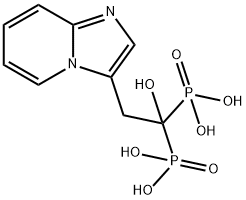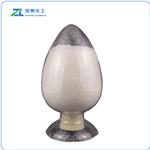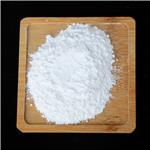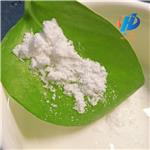Minodronic acid hydrate, a third-generation bisphosphonate, was
approved and launched in Japan for the oral treatment of
osteoporosis. Osteoporosis is a skeletal disorder characterized by low bone mass and structural deterioration of bone tissue resulting in bone
fragility and increased susceptibility to fractures, particularly of the hip,
spine, and wrist. It is the most common type of metabolic bone disease
and a major health concern affecting 200 million women worldwide.
Minodronic acid is the newest nitrogen-containing bisphosphonate to reach the market. In vitro, it inhibits
recombinant human FPP synthase activity with similar potency as zoledronic acid (IC50 = 3 nM for both agents).
The most common adverse events associated with minodronic acid included stomach and abdominal discomfort, abdominal pain, decrease in blood calcium level, and gastritis. The chemical synthesis of minodronic acid starts with a condensation reaction of 2-aminopyridine with ethyl 4-bromo-3-oxobutyrate by means of sodium bicarbonate to produce 2-(imidazo[1,2-a]pyridin-3-yl)acetic acid ethyl ester, which is hydrolyzed to the corresponding carboxylic acid with potassium hydroxide. Treatment of the carboxylic acid intermediate with phosphorus acid and phosphorus trichloride followed by hydrolysis with hydrochloric acid gives minodronic acid.



